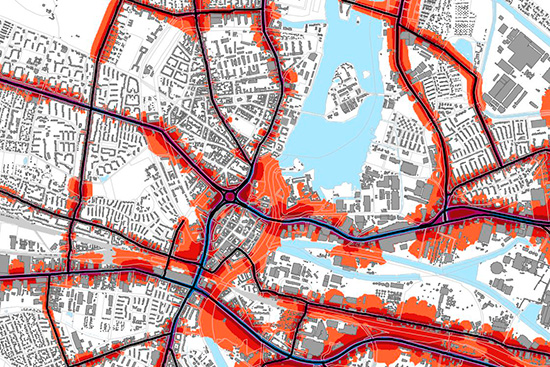Calculating Road Traffic Noise – But How?
Urban land use planning and traffic planning – 16th BImSchV
In the context of urban land use planning and traffic planning, road traffic noise in Germany had to be calculated with the RLS-90 until recently. Since the revision of the 16th BImSchV and the corresponding publication in the Federal Law Gazette of November 9, 2020, the RLS-19 (Guidelines for Noise Control on Roads – 2019 Edition) now applies.
Noise Mapping for the implementation of the EU Environmental Noise Directive – 34th BImSchV

The basis for the calculation of environmental noise according to the EU Environmental Noise Directive (noise mapping) was in turn amended and published in the form of the 34th BImSchV (§ 5 (1) of the Ordinance on Noise Mapping) in the Federal Gazette on October 5, 2021.
Until the end of 2018, the calculations were made according to a preliminary EU Environmental Noise Directive, which was replaced by a renewed version ("Berechnungsmethode für den Umgebungslärm von bodennahen Quellen (Straßen, Schienenwege, Industrie und Gewerbe) – BUB") on December 31, 2018. This version is now being used in a further modified form in the upcoming noise mapping projects.
Four regulations and their differences
Thus, IMMI users "struggle" with four regulations when calculating road traffic noise. Although two of these are now no longer applicable to current projects, the results from previous projects must still be compared with the "new" results and deviations must be evaluated. "Switching" between calculation regulations is comparatively easy in IMMI, nevertheless it is good and partly necessary to know the differences.
A study commissioned by the German Federal Environment Agency has recently become available to help with this: As part of a research project, the differences between the individual calculation terms of the four calculation regulations mentioned were investigated and their individual effects were compared. The impact of the sound source and dispersion-related changes on the immission levels were shown by model calculations with corresponding parameter variations. For the comparative calculations, IMMI was essentially used as the calculation tool.
